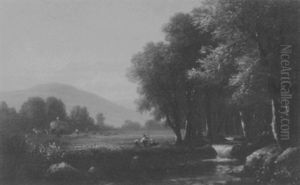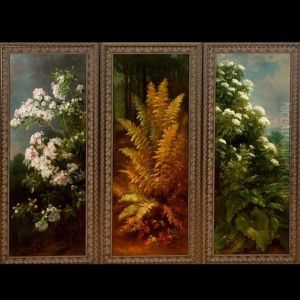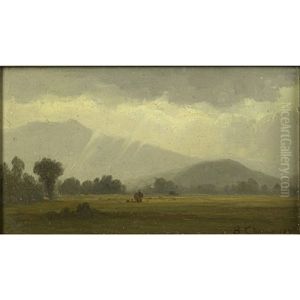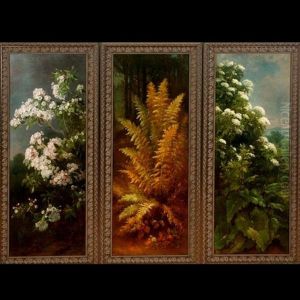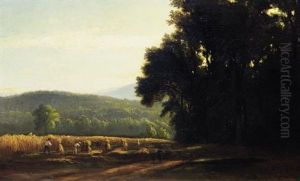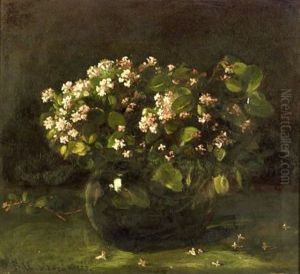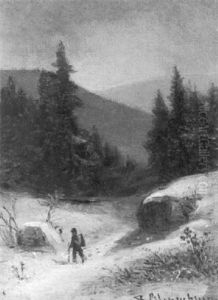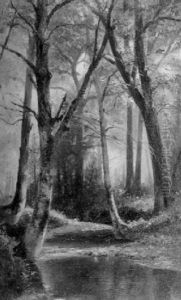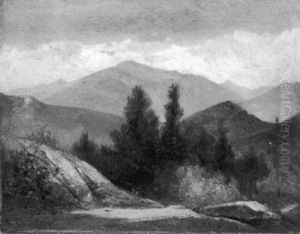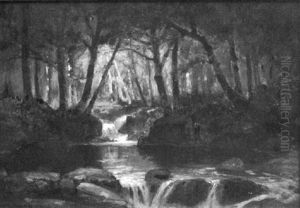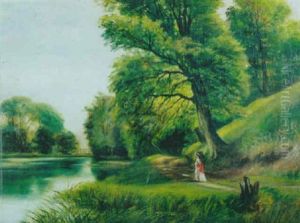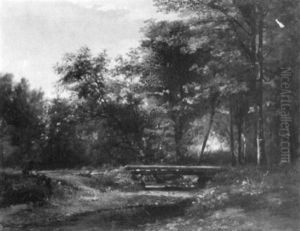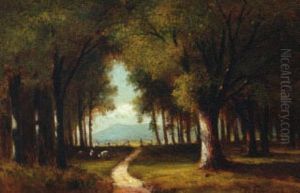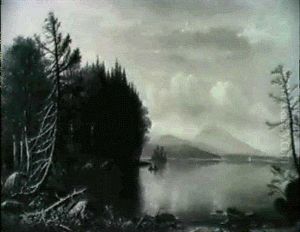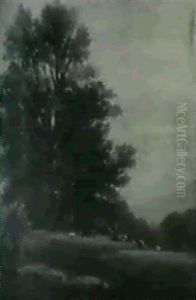Benjamin Champney Paintings
Benjamin Champney was an American painter known primarily for his White Mountain landscapes. Born on November 20, 1817, in New Ipswich, New Hampshire, Champney grew up with an appreciation for the natural beauty of the New England landscape.
In the early years of his career, Champney studied lithography in Boston, which was then a burgeoning field. However, his passion for painting soon led him to pursue formal art education. In 1838, he traveled to Paris to study with renowned artists and was influenced by the Barbizon school. During his time in Europe, Champney was exposed to the work of the old masters and the contemporary artistic movements, which deeply influenced his style and approach to landscape painting.
Upon returning to the United States, Champney settled in the White Mountains of New Hampshire, an area that would become central to his work. He quickly became one of the founders of the White Mountain art movement, capturing the region's dramatic beauty and natural landscapes in his paintings. His works were characterized by their realism and attention to detail, and he was particularly adept at conveying the changing moods of the mountains and valleys.
Throughout his career, Champney exhibited his work widely, and his paintings were well-received by both critics and the public. He became a prominent figure in the American art scene, contributing to the popularization of landscape painting in the United States during the 19th century.
Champney was not only a painter but also an advocate for the arts. He was involved in the establishment of art associations and the promotion of art education. His influence extended beyond his own work, as he mentored and inspired a generation of artists who also found their muse in the American landscape.
Benjamin Champney's legacy lives on through his paintings, which continue to be appreciated for their representation of American scenery and their contribution to the country's artistic heritage. He passed away on December 11, 1907, leaving behind a body of work that continues to captivate viewers with its timeless beauty and technical skill.




